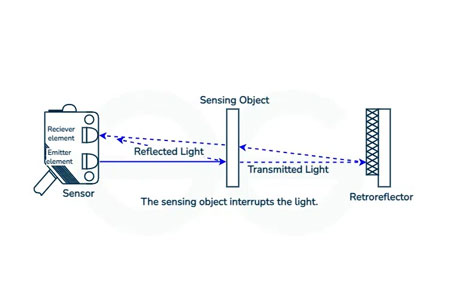Key Takeaway
The photoelectric effect works when light photons hit a material’s surface, transferring their energy to electrons. If the energy is enough, the electrons are ejected, overcoming their binding energy.
The energy required depends on the material’s atomic structure. This principle is applied in technologies like solar panels and photoelectric sensors, converting light into electrical energy or detecting light changes.
Step-by-Step Explanation of the Photoelectric Effect’s Mechanism
The photoelectric effect begins when light, in the form of photons, strikes the surface of a material. If the photon has enough energy, it transfers this energy to an electron, which gets excited and breaks free from the material’s surface. Think of it like a billiard ball hitting another ball—if the hit is strong enough, the second ball moves.
But not every photon can cause this effect. It needs to have sufficient energy, often determined by its wavelength. Shorter wavelengths, like ultraviolet light, carry more energy than longer wavelengths, such as infrared. The energy threshold a photon needs to release an electron is known as the material’s work function. If the photon doesn’t meet this threshold, nothing happens, no matter how many photons hit the surface. This step-by-step mechanism is fundamental to understanding the entire process.

The Role of Photons in the Photoelectric Process
In the photoelectric process, photons are more than just particles of light—they are the very energy carriers that make the effect possible. Think of photons as tiny messengers, each carrying a specific amount of energy based on its frequency. The higher the frequency, the more energy they hold. This is why blue light, with its higher frequency, has more energy than red light. When these photons hit a material, their energy can knock electrons loose, leading to the photoelectric effect.
In industrial settings, such as in photoelectric sensors, this energy transfer is crucial. The sensors rely on light to detect objects, and the energy must be sufficient to cause the photoelectric effect. Without the right amount of energy, the entire detection process would fail. This makes photons not just theoretical particles but practical tools in the hands of engineers, driving technologies that are essential in modern industry.
Materials Commonly Used in Photoelectric Devices
Not every material can support the photoelectric effect, and that’s where careful material selection comes into play. Metals like cesium, zinc, and cadmium, known for their low work function, are commonly used in photoelectric devices. Their ability to release electrons easily when exposed to light makes them ideal for these applications. Semiconductors like silicon are also widely employed due to their ability to conduct electricity upon light exposure.
For photoelectric sensors, material sensitivity is key. These sensors must detect even low-energy photons to function accurately. That’s why the right material selection is critical in industrial environments where precision is everything. Engineers must consider how these materials perform under various conditions, ensuring that the sensors operate reliably and efficiently.
Factors That Influence the Efficiency of the Photoelectric Effect
The efficiency of the photoelectric effect doesn’t just depend on the material—it’s influenced by several other factors. The intensity of the light source is one of them. More intense light means more photons hitting the surface, which can increase the number of electrons emitted. However, this only works if the energy of each photon is high enough. Otherwise, no matter how strong the light is, it won’t improve the efficiency.
Another key factor is the material’s surface condition. Smooth, clean surfaces allow photons to strike evenly, increasing efficiency, while rough or dirty surfaces can scatter the light and reduce it. Additionally, temperature plays a role. Warmer conditions can give electrons the extra push they need, whereas colder conditions can reduce their likelihood of escaping. All these factors must be optimized to ensure the best performance of photoelectric sensors in industrial environments.
How the Photoelectric Effect Is Used in Modern Sensor Technologies
Photoelectric sensors have become a cornerstone of modern industrial automation. These sensors work by emitting light toward an object, detecting changes when the light beam is interrupted. This contactless method of detection makes them highly efficient for applications like object detection on assembly lines or distance measurements in automated systems.
In harsh environments where mechanical sensors may fail, photoelectric sensors shine. They offer a robust solution without the need for direct contact, ensuring faster and more accurate operations. The photoelectric effect lies at the heart of these sensors, turning a fundamental physical principle into a practical technology that is vital for industries worldwide. Their reliability and efficiency make them indispensable in any modern industrial setup.
Conclusion
The photoelectric effect is not just a theoretical concept; it’s a practical phenomenon driving innovations across industries. From photoelectric sensors on factory floors to solar cells powering homes, this effect is embedded in the technologies we rely on daily. Understanding how it works and the factors that influence it is crucial for engineers and professionals working with modern technologies. With the right materials, conditions, and understanding, the photoelectric effect can be harnessed to improve efficiency and accuracy in a wide range of industrial applications.
